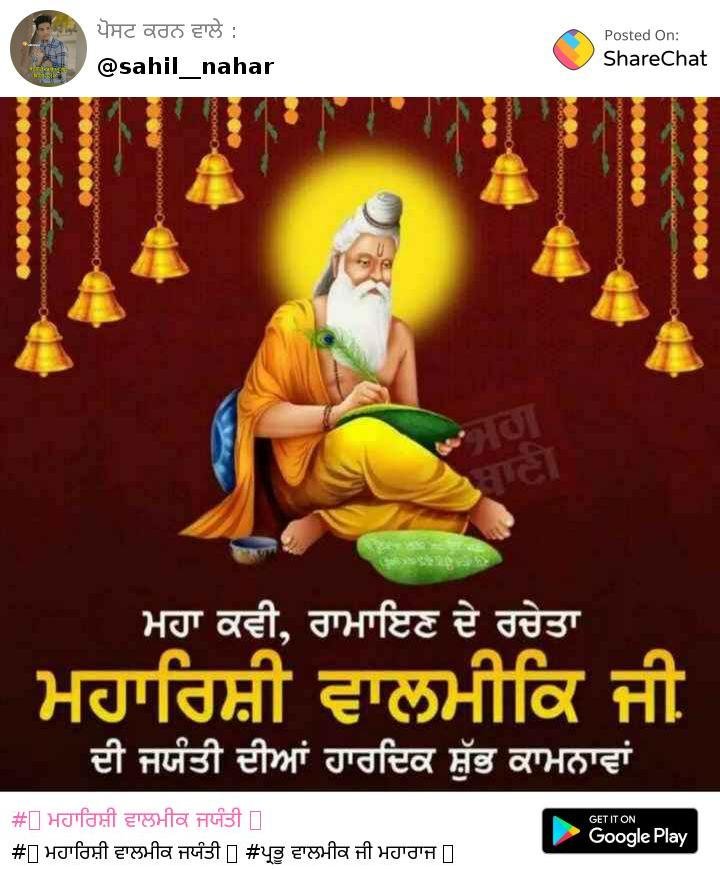-
Posts
4,357 -
Joined
-
Last visited
-
Days Won
17
Content Type
Profiles
Calendar
Forums
Everything posted by singhbj singh
-
“There is too much chaos and uncertainty outside. We don’t know how long this fight is going to last, but there is a sense of calm here,” says Gagandeep Singh, a protester at Singhu border, as he offers prayers in a makeshift gurudwara set up at the protest site. https://www.thequint.com/news/india/sikh-farmers-set-up-gurudwara-at-singhu-border#read-more
-
Tirath https://www.gurbani.org/gurblog/tag/tirath/
-
Ath Sath Tirath https://www.goldentempleamritsar.org/best-places-to-visit/india/golden-temple/ath-sath-tirath.php
-
VID-20201207-WA0015.mp4
-
Don’t burn the bridges Thursday, 03 December 2020 | Priyadarshi Dutta The farmers’ agitation requires sympathetic handling even if the Govt has facts on its side. A cavalier attitude is fraught with great political and security risk It brought no fresh honour upon the Union Government that agitating farmers from Punjab were left to shiver on the streets of Delhi the night gurudwaras had been illuminated for Guru Nanak Dev Jayanti. Even as the farmers’ agitation had been raging in Punjab since September, the Government had been complacent about it till they knocked the doors of Delhi. At that time, Prime Minister Narendra Modi had not blinked twice before accepting the resignation of Harsimrat Kaur from the Cabinet. Her party, Shiromani Akali Dal (SAD), one of the oldest constituents of the National Democratic Alliance (NDA), quit the ruling coalition a week later. Whatever the parting of ways might mean for the SAD, it could have serious consequences for peace in the frontier State. The BJP’s diminished clout in Punjab contrasts with its firm grip at the Centre. Also, expanding footprints across India might actually drive the Sikh-majority state into an isolationist mindset. The BJP-SAD partnership, according to the late Arun Jaitley, was as much a social alliance as it was political. Their coming together in the mid-1990s was an apt postscript to the end of the insurgency in Punjab. Moreover, the SAD’s support base was among rural Jat Sikh agriculturists while the urban Hindu middle-class made up the BJP’s constituency. So the breakup might trigger polarisation, with nefarious elements waiting in the wings to revive militancy in the state. This will be the last thing the BJP wants in a State where Hindus are in a minority. The Modi Government has no Sikh face, barring Hardeep Singh Puri, who is a diplomat, rather than a politician by grooming, and he lost the Amritsar seat in the 2019 Lok Sabha election. The council of ministers is lacking even the ornamental presence of S.S. Ahluwalia, BJP MP from West Bengal, though he never represented Sikh votes. The saffron party had earlier lost Navjyot Singh Sidhu to the Congress. The Government might have the best interest of farmers in its heart while enacting the new agricultural laws but reforms in the agricultural marketing sector were long overdue to make farming remunerative. While there was no bar on selling agriculture produce in the open market, outside the MSP regime, or on items not procured by the Government, even before the new laws were enacted, there was no commercial and legal architecture for it. Sadly, the Government felt that consensus-building was redundant. The laws, enacted during the Monsoon Session, had originally been rushed through the Ordinance route on June 5. It is unclear whether there were even minimal consultations with the State Governments (agriculture being a State subject under the Seventh Schedule of the Constitution), farmers’ associations and other stakeholders. Even the Bharatiya Kisan Sangh (BKS), a front organisation of the RSS, is unhappy with the way the Government dealt with the issue. Mohini Mohan Mishra, the BKS All India Secretary, recently stated that nearly 25,000 farmers had sent a proposal to the Prime Minister. There’s no doubt that the laws have been made for the traders and would eventually benefit them. This is akin to what Rabindranath Tagore, speaking of the British rule wedded to the idea of progress, observed: “They are not unwilling to do a favour but don’t wish to come close. They would rather feel relieved if they can hastily beat retreat after doing the favour…they don’t do mercy, they do a favour, they do not love but protect; do not respect but try to act fairly; they do not irrigate the land, though never ungenerous in sowing abundant quantity of seeds” (Raja-Praja, P.4-5). His remarks appear telling today. The Government’s cavalier attitude that “we know what’s good for you” vis-à-vis the farmers has clearly run into problems. Even if the Vigyan Bhawan talks break the ice, the Government would have finally realised that to act in haste and repent in leisure is not a good policy. The critics of the farmers’ agitation, active on social media, have been quick to dub the farmers as supporters of Khalistan. Fake photos were also circulated on the digital space. The question is what do they propose to do even if they are Khalistan sympathisers? Would they like to send the Army to quell them? Can the BJP Government afford to burn its bridges in Punjab? Do they have a strong constituency of their own or friends to rely upon if the agrarian crisis, god forbid, deepens into a social crisis? The unsympathetic attitude of slandering democratic governments of the past for farmers’ woes must stop. When a Government tries to de-legitimise the Opposition or vice versa, forces inimical to democracy and peace (like the Khalistanis, for instance) take over. Punjab has profited from the dam-building policies by Jawaharlal Nehru, Food Corporation of India (FCI) procurement by Lal Bahadur Shastri and the Green Revolution by Indira Gandhi. The right way the Modi Government can package its agriculture policy is by saying that it wants to take the story forward through measures long overdue. Fortunately, the BJP did not have to fight the Khalistani insurgency in the State in the 1980s and early 1990s. It was fought mostly by the Congress Government, even though it was partly responsible for its rise and momentum. In the 1980s, Khalistanis gained by projecting the post-Green Revolution agrarian problems in Punjab along communal lines. At that time, the Congress, which was in as strong a position across India as the BJP is today, was projected as a Hindu fascist party. The Hindus of Punjab became the first targets of Khalistani violence. This is something that all parties, including the BJP, have avoided recalling in public for fear of opening old wounds. Traces of Khalistani elements, there is no gainsaying, are still active in Punjab. They are likely to exploit for their evil agenda any unsympathetic attitude of the Government towards the farmers, the bulk of whom are Sikhs. The farmers of Punjab have so far rightly avoided communalising the current issue unlike they did so in the 80s. In fact, when their agitation took off in mid-September, it was both against the Centre as well as the State, where the Congress is currently in power. Apart from rolling back the farm bills, they also wanted loan waiver from the State Government. However, in the last two months, the Congress has been able to garner the farmers’ sympathies. In politics, sentiments matter as much as policy. Way back in March, 1783, a Sikh force led by Baba Baghel Singh and Jassa Singh Alhuwalia had attacked Mughal Delhi to hoist the triangular saffron flag at Red Fort. A troop of 30,000 Nihang Sikhs encamped at a place nearby, which later came to be known as Tis Hazari. The farmers of Punjab have beaten their swords in ploughshares and spears into pruning hooks. Nothing must be done to wake up the sleeping demons of the 1780s or the 1980s. (The writer is an author and independent researcher based in New Delhi. Views are personal.) Source -https://www.dailypioneer.com/2020/columnists/don---t-burn-the-bridges.html
-
Sandeep Kaur moved from India to Australia as an international student in 2013 Ms Kaur, 27, revealed her experience of being a female truck driver in Australia The Sikh woman is Brisbane-based and drives to interstate cities such as Sydney She said the career was a 'rewarding experience' with good pay and benefits Ms Kaur encouraged other women to try trucking if they also love to drive A humble Sikh woman has revealed what it's like to be a female driver in the male-dominated trucking industry. https://www.dailymail.co.uk/news/article-9000213/Hard-working-Sikh-truckie-reveals-like-woman-road-Australia.html
-
VID-20201201-WA0044.mp4
-
VID-20201201-WA0045.mp4
-

Bhai Gurpreet Singh (Amritvela Trust)
singhbj singh replied to singhbj singh's topic in GURBANI | SAKHIAN | HISTORY
https://www.sikhnet.com/gurbani/artist/bhai-gurpreet-singh-amritvela-trust -

Bhai Gurpreet Singh (Amritvela Trust)
singhbj singh replied to singhbj singh's topic in GURBANI | SAKHIAN | HISTORY
VID-20201029-WA0095.mp4 -
VID-20201022-WA0020.mp4
-
Background https://www.sikhiwiki.org/index.php/Balmiki
-
Gurbani Word Of The Day: Baalmeek https://www.sikh24.com/2017/02/15/gurbani-word-of-the-day-baalmeek/
-
-
https://m.facebook.com/nishansinghaustralia/videos/1269259460109889/?refsrc=https%3A%2F%2Fm.facebook.com%2Fgurvichar%2F&_rdr
-
Can a non-Sikh stay in a Gurdwara? https://www.quora.com/Can-a-non-Sikh-stay-in-a-Gurdwara
-
Why do we have to go to the gurdwara if we already have a Guru Granth Sahib at home? https://www.quora.com/Why-do-we-have-to-go-to-the-gurdwara-if-we-already-have-a-Guru-Granth-Sahib-at-home
-
If all Gurdwaras (Sikh temple) in the world stop serving langer, then what do you think what percentage of people would still go to Gurdware? https://www.quora.com/If-all-Gurdwaras-Sikh-temple-in-the-world-stop-serving-langer-then-what-do-you-think-what-percentage-of-people-would-still-go-to-Gurdware
-
How is the gurdwara used by the Sikh community? https://www.quora.com/How-is-the-gurdwara-used-by-the-Sikh-community
-
Which Gurudwara in India allows the homeless to stay as long as they need? https://www.quora.com/Which-Gurudwara-in-India-allows-the-homeless-to-stay-as-long-as-they-need
-
Why do we find peace in Gurudwara? https://www.quora.com/Why-do-we-find-peace-in-Gurudwara
-
Delhi: Gurdwara Sri Bangla Sahib is all set to open a diagnostic facility for the poor and underprivileged people in the first week of December. For the MRI at Gurdwara Sri Bangla Sahib, the needy will have to pay Rs 50 while others will be required to pay Rs 800, while the dialysis will cost about Rs 600. The upcoming diagnostics center at Sri Bangla Sahib promises to provide tests at the “cheapest” rates for those who can’t afford them. It is being set up by the Delhi Sikh Gurdwara Management Committee (DSGMC) in the Gurdwara’s 50-year-old dispensary. Meanwhile, the DSGMC president Majinder Singh Sirsa said that they get a lot of people who are poor. As per the report, the committee has put together Rs 6 crore, besides donations from several individuals, with which it has bought four dialysis machines, an MRI, X-Ray, and an ultrasound machine. Normally, the MRI costs at Rs 6,000-8,000 but it will cost Rs 50 at Gurdwara Sri Bangla Sahib. Meanwhile, Pioneer Surgeon Dr. Arvinder Singh Soin said that “After a low-cost dispensary, Gurdwara Bangla Sahib is now slated to open a cheap diagnostic facility. An ultrasound will cost Rs. 150 & an MRI Scan Rs. 50!” However, the MRI at Rs 50 is just for needy people while for others it will cost Rs 800. This is not the first time that the Gurdwara has made headlines. During the nationwide lockdown, the Gurdwara had prepared meals for around 75,000 people. https://www.ptcnews.tv/indias-cheapest-diagnostic-facility-at-delhis-gurdwara-sri-bangla-sahib-en/
-

How can non-sikhs do wonderful Kirtan ?
singhbj singh replied to singhbj singh's topic in WHAT'S HAPPENING?
Akal Takht ex-jathedar begins lobbying for SGPC polls https://m.timesofindia.com/city/amritsar/akal-takht-ex-jathedar-begins-lobbying-for-sgpc-polls/articleshow/78597177.cms Punjab: Dalit, Sikh bodies to observe tomorrow 100th anniv of event that led to formation of SGPC https://indianexpress.com/article/cities/chandigarh/punjab-dalit-sikh-bodies-to-observe-tomorrow-100th-anniv-of-event-that-led-to-formation-of-sgpc-6720192/ -

How can non-sikhs do wonderful Kirtan ?
singhbj singh replied to singhbj singh's topic in WHAT'S HAPPENING?
https://en.m.wikipedia.org/wiki/Maithili_Thakur https://m.facebook.com/maithilithakurofficial


